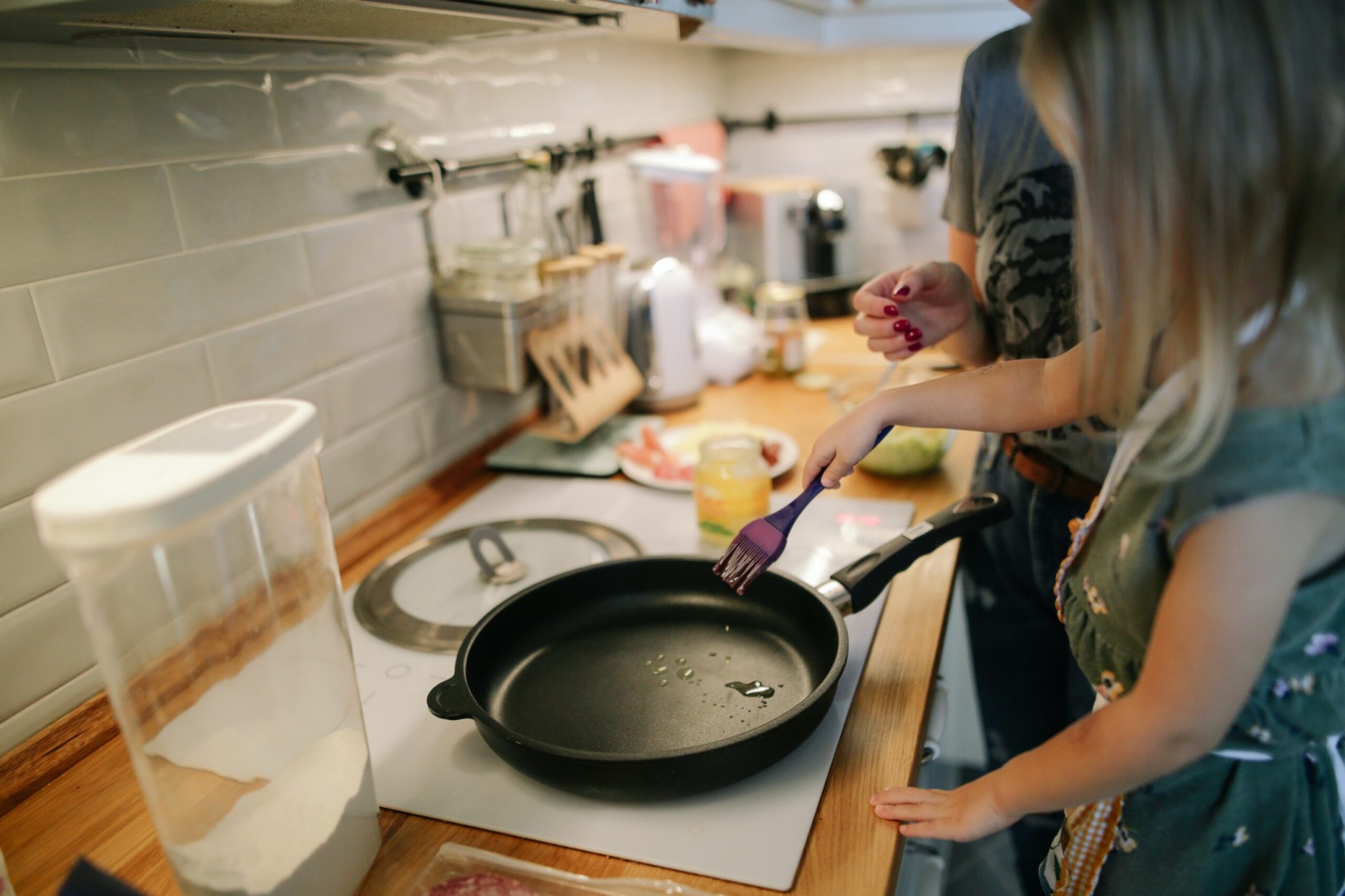

Non-stick cookware is often a kitchen favorite because food doesn’t stick to its surface—making it easy to whip up dinner without a huge cleaning hassle. The kitchen essential has grown in popularity since scientists created the first non-stick cooking pan in 1954, but the COVID-19 pandemic drove a surge. The market demand for non-stick cookware reached 206.1 million units worldwide in 2020 and is expected to increase even more due to the growing preference for it.
The non-stick coating is made of a synthetic fluoropolymer called polytetrafluoroethylene (PTFE), more commonly known under the brand name Teflon. A 2022 report from the non-profit organization Ecology Center shows that 79 percent of non-stick cooking pans and 20 percent of non-stick baking pans were coated with PTFE.
[Related: Which veggie oil is most sustainable? It’s complicated.]
In a new Science of The Total Environment study, the authors simulated the cooking process with different non-stick pots and pans using turners made of different materials, like steel or wood. They found that non-stick cookware mainly coated with Teflon may release about 9100 plastic particles during the cooking process if it has a surface crack. Should something break the coating, around 2,300,000 microplastics and nanoplastics may be released and potentially find their way into food.
These cracks are a problem because PTFE falls under per- and polyfluorinated substances (PFAS), a group of chemicals that don’t break down in the environment, contaminate soil and water and build up in the bodies of living creatures. Once millions of PFAS plastic particles are released, they will circulate in the ecosystem for a long time, which explains why they are commonly dubbed “forever chemicals.” Its widespread occurrence in the environment may increase human exposure to PFAS, potentially leading to health impacts like altered metabolism, increased risk of being overweight or obese, and reduced ability to fight infections.
The authors quantified the release of plastic particles from non-stick cookware by scanning the surfaces of different non-stick pots to generate data. The data was then converted to an image using three algorithms to visualize the microplastics and nanoplastics directly, says Cheng Fang, senior research fellow in the Global Centre for Environmental Remediation (GCER) at the University of Newcastle in Australia, who was involved in the study.
“PFAS are a class of chemicals that are characterized by extremely long environmental persistence,” says Graham Peaslee, professor of physics at the University of Notre Dame who was not involved in the study. “The smaller PFAS don’t break down from exposure to sunlight, microorganisms, or anything else routinely, which means they can last for hundreds of years or longer in the environment once created.”
To avoid contaminating food or the environment with plastic particles from PTFE cookware, at-home chefs must use soft turners or non-sharp utensils that don’t scratch the surface during the cooking and cleaning process. Should there be any scratches on the cookware, replacement is recommended, says Fang.
Still, cracked surfaces aren’t the only thing to consider when cooking with Teflon. The coating can also release toxic chemicals into the air when it reaches extreme temperatures. There are several cases of individuals experiencing temporary, flu-like symptoms from polymer fume fever—as a result.
[Related: Use the Leidenfrost effect to make your stainless steel pan non-stick.]
Peaslee says re-evaluating the necessity of Teflon-coated cookware may reduce our exposure to PFAS. He adds that it may have been marketed as a great new technology in the 1950s, but cast iron always worked just as well. Fluoropolymers are concerning for environmental and human health because they emit PFAS during production, processing, use, and end-of-life treatment. There are reasonable alternatives that will do less harm to the environment and not support the fluoropolymer industry, like ceramics or stainless steel, says Peaslee.
Although much is yet to be known about the impacts of microplastic pollution on the environment, reducing the use of plastics and improving the recycling process should be paramount, says Fang.
“In our daily lives, we have lots of plastic items surrounding us,” he adds. “Most of them can gradually release microplastics and nanoplastics in their lifetimes, as tested and confirmed in this study.”
Correction 11/16/22: The brand name Teflon has been removed when not directly referring to Teflon products.
